An Article By Idai Makaya (written for the Oct 2017 ElliptiGO Newsletter):
This is the first in a series of ElliptiGO training articles aimed at addressing some of the most common questions I am asked by ElliptiGO riders – old and new. I’ve taken many years to pick up much of my ElliptiGO riding experience but I’ve found that most of these learnings can actually be adopted really quickly by new riders and it saves them from having to spend (and waste?) their precious time learning the building blocks of elliptical bike training – when they can instead have fun progressing fast and enjoying their riding more.
The topic of this first article is building up your fitness on an ElliptiGO bike – specifically for riders who start at a very low fitness level. There are many people who come into ElliptiGO training at a decent fitness level and with a lengthy fitness background. Often such individuals have come into the impact-free training because of injuries or problems in another sport (such as running).
But there is also a significant group of people who see the ElliptiGO simply as a way to get into fitness for the first time and that’s whom this article is largely aimed at, although most of the advice I’m about to share will apply to everyone starting out for the first time in ElliptiGO training.
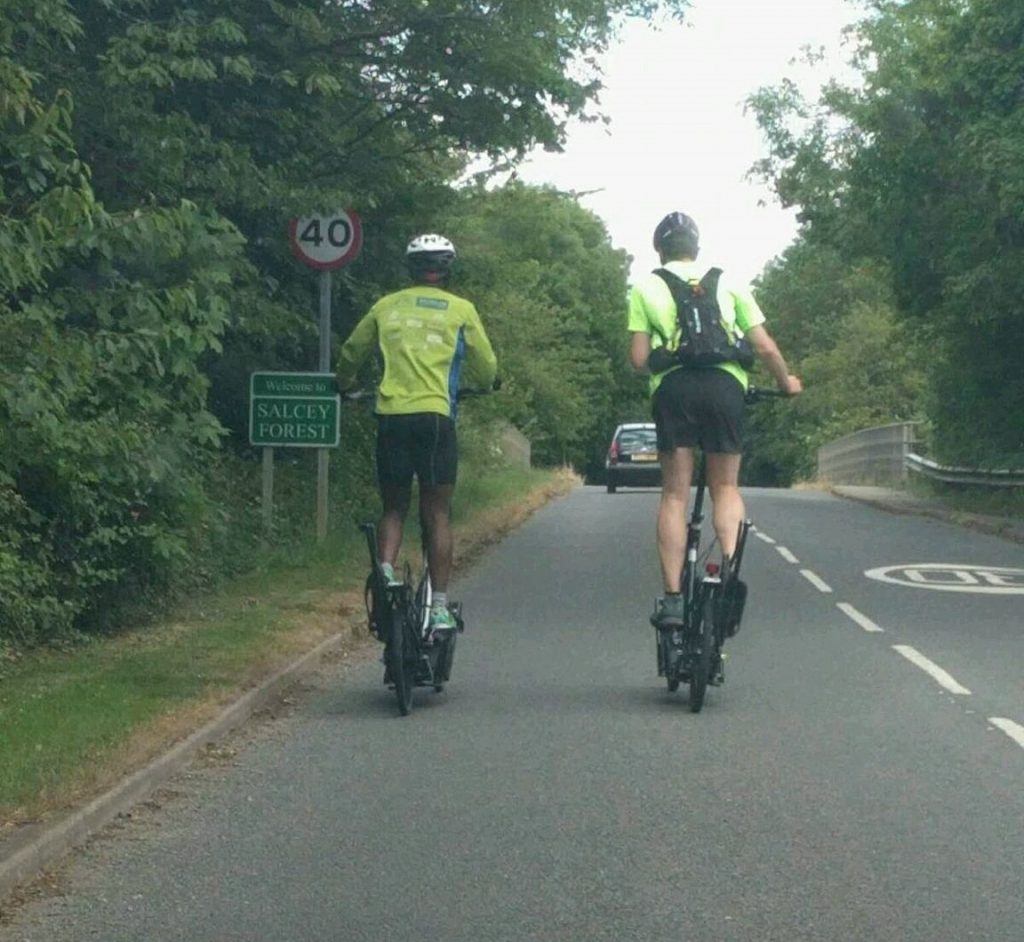
The first rule of all bike riding is to observe personal safety. You need to be safe on the road if you are to truly enjoy and make the most of your riding – and this safety is based on the following fundamentals:
- Understanding how your bike works – and being able to operate it skillfully.
- Related to the point above, there are specific bike handling skills every rider needs to develop, in order to be safe and comfortable on their bike. Signalling your intentions, being aware of the situation 360 degrees around you – and being stable on the bike – are all part of this.
- You also need to be able to drink water on the bike, or to clear insects and other such debris out of your eyes – should they somehow find their way there. So you should be familiar with one-handed riding.
- You should also have a basic understanding of how your machine is supposed to be set up to operate properly (and part of this relates to being able to give the bike a general check-over, which would identify any potential safety and operational hazards in advance of riding). You can only know when something is wrong when you know what actually looks right!
In relation to the fundamentals above, if you are not comfortable with all these skills please follow the links below and implement the simple, easy-to-follow drills (which will get you up to speed really quickly). The videos in the drills below are short, simple and to-the-point:
- Bike safety check – making sure everything is working as it should.
- First Ride Video – pick up the very basics of riding an ElliptiGO bike.
- One-handed riding – an essential skill for every bike rider on public roads.
- Other important tutorials for new ElliptiGO riders – everything else you probably need to know!
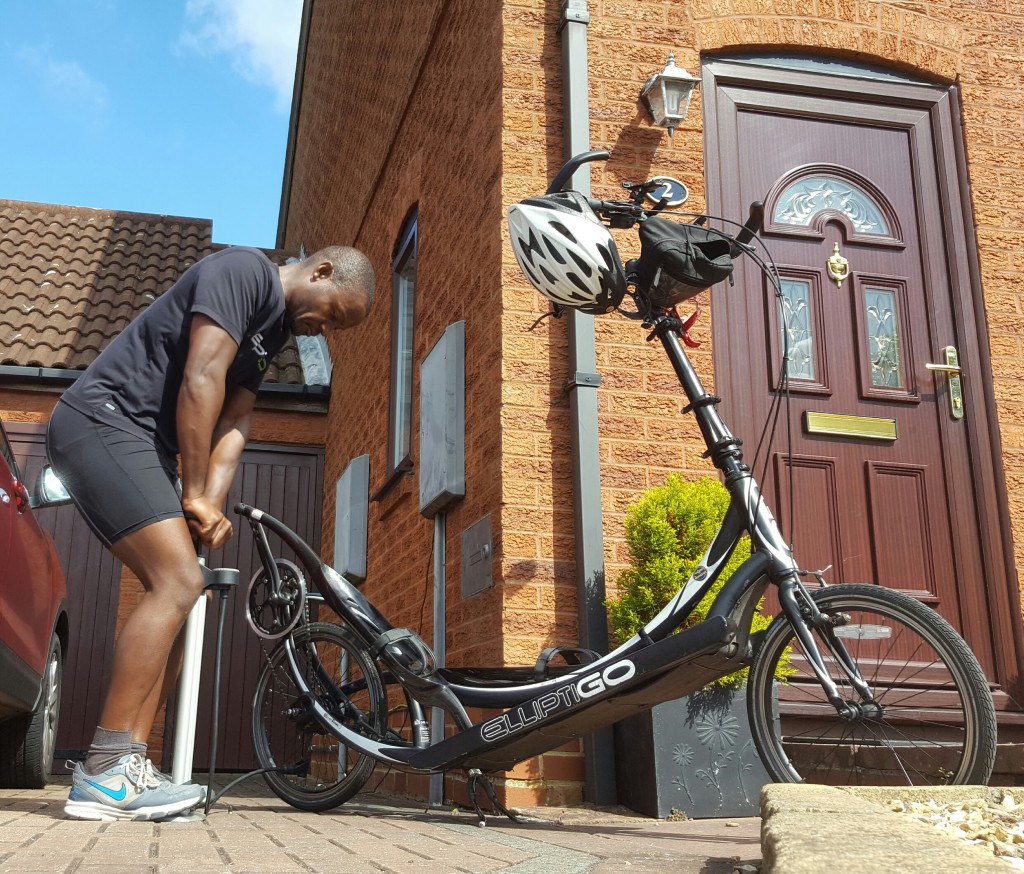
Now that the basic essentials are out of the way, we can focus on the more fun bits relating to actually using the bike, enjoying your training and improving your health and fitness.
As a new rider (who has taken a week or so to get really familiar with the bike, its handling dynamics and basic operations) the next step is to focus on your actual training goals. But before you launch into anything goal-specific, you need to build some basic fitness (specific to riding the ElliptiGO itself). This principle applies to everyone, whether you’re an Olympian or an unfit person beginning exercise and fitness for the very first time.
The first rule of all physical training is to learn to carry out your exercises with the correct form.
This applies whether you are taking up running, cycling, lifting weights, or swimming. It applies to every and any exercise. You need to execute your exercises in ways that will allow you to continue to develop to your full potential and you need to be able to execute your exercises in ways that won’t ultimately injure you (or stifle your future development). You also need to be able to execute your exercises in ways that are enjoyable and engaging.
So, no pain = gain.
By this I mean that pain and discomfort are your ‘guides’ when you begin a new exercise. If you go on a first ElliptiGO ride and feel some sort of discomfort whilst actually riding, you are likely doing something wrong. Similarly, discomfort experienced shortly after riding – or in the two days following a ride – are all great pointers for you.
- Sore wrists, shoulders, or leg muscles often indicate riding too hard, or too far – too soon.
- Pressure points – or abrasions – suggest a change of kit is probably required.
- Uncomfortable hands, aching wrists & shoulders, or an uncomfortable neck – all probably indicate that you are leaning forward to much.
So when you first start training on the ElliptiGO it is really useful to ride it on every second or third day, so that you can sense exactly what is causing any reactions your body is giving. Then you can use that feedback to work on your form in the next ride you do. If you ride every day it becomes more difficult to pinpoint exactly what type of riding might have caused any specific reaction which then develops. Most aches and pains will peak sometime in the first 48 hours after any exercise activity.
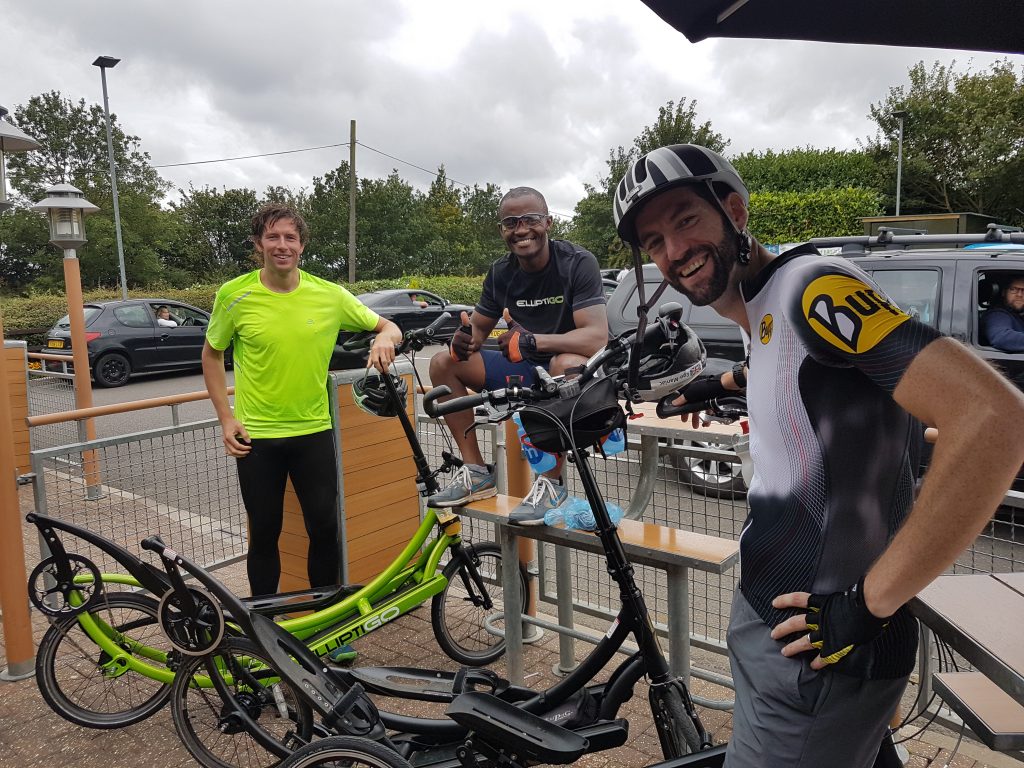
Related to the above paragraph, try also to focus on not introducing too many new exercises at the same time. So if you are starting ElliptiGO training don’t also start riding a road bike, or start lifting weights, or start running – if you do not already routinely do those exercises.
Phase your new training in carefully, so that it is easy to identify what is causing any reactions or issues which might arise. By ‘issues’ I am not just referring to setbacks or big negative experiences – it is really about tracking how your body responds to the new exercise.
So if you already do other exercises do not increase any of them when you first start your ElliptiGO training. Either reduce current exercises or keep the rest of your routine static (at where it was before introducing the ElliptiGO rides). That way, any reactions will almost certainly relate to the new exercise – rather than to increases in an existing one.
So follow this rule whenever you introduce any new exercise – keep the rest of your personal routine static at the time of introduction, so that any changes which may come can be attributed accurately to the new exercise. You may be a runner who wants to increase overall endurance training volume and intensity by adding ElliptiGO training – which is all well and good. But do not increase the amount or intensity of your running whilst also initiating the new ElliptiGO training – because if your knee then becomes painful it is difficult to say whether the increase in running did it, or the addition of the ElliptiGO training (or even a combination of both).
The next thing to focus on, as a new ElliptiGO rider, is perfecting the riding motion. This refers to learning good form right from the outset. I have found that it is really difficult to ‘unlearn’ bad habits once they have set in with any exercise – including ElliptiGO training – so try to set out as you mean to continue. Everyone wants to be a b@d@$$ and ‘out ride’ every cyclist they happen to meet on the road (or at least try to!) but realistically we must focus on ourselves most of the time – and on our own training journey.
Being competitive against others you meet during training is not useful in the initial phases of your development – in any new sport or exercise. In fact, being competitive against others in training is not useful for most people, most of the time. This is because we are all ‘a project of one’. We are all in different phases of personal development. So we must follow our own training plans quite diligently – and not be diverted by whomever we happen to run into on the road, on any particular day.
If you are on a gradual fitness progression you must not suddenly enter into a race because a stranger happens to overtake you as you are training – or because you see a stranger labouring ahead of you on the horizon and decide you must prove yourself by overtaking them. There is nothing to be gained from this – except the fleeting and temporary satisfaction of overtaking somebody who is preparing for something else (and is probably not even racing you). But you will also have ruined your training plan for the day by racing against strangers whom you meet on the road – and, in practical terms, you’ll have wasted what could have been a progressive day of training.
So what do we do instead?
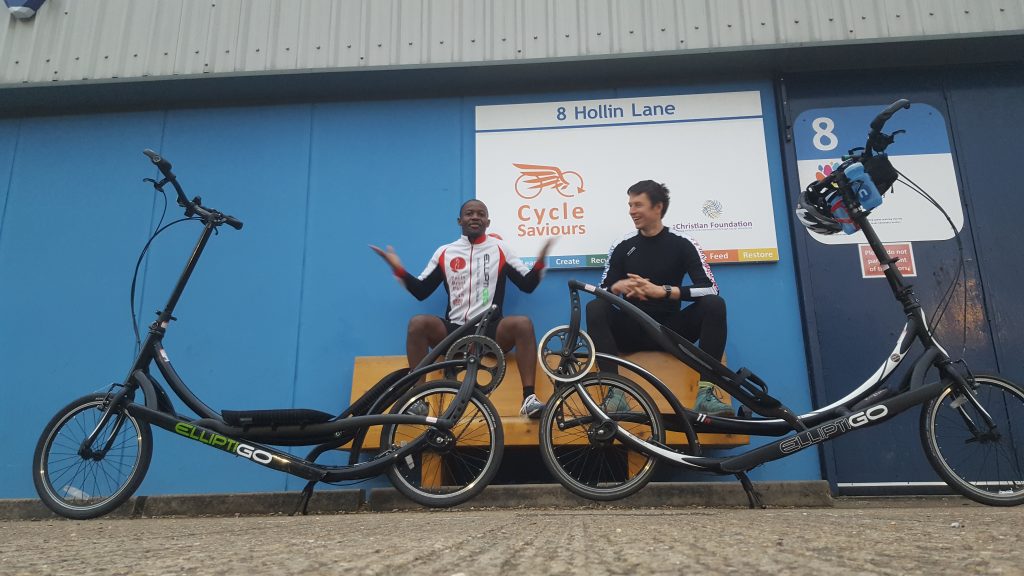
Instead, we focus on having a training plan in the first place.
It often helps to have a set of intentions, or a direction, for your exercise and training. This does not have to be pages of spreadsheets and periodization tables. It just needs to be a predetermined direction for your training, with measurable landmarks or goals, so that you can actually say whether or not you are better than you were when you started (and so that your progress can be measured).
I won’t go into the details of goal-setting in this article, but that is a topic I shall cover in due course, because it is so important. For a few pointers on my personal views around goal-setting for health & fitness, please have a quick glance at this link to an article I wrote on the topic.
We also need to focus on learning to enjoy the movement.
Again, this applies to everyone – regardless of your fitness level. When you first start using the ElliptiGO you must learn how to execute the movement properly and to enjoy the movement. Hard training and ambitious goals are completely unrealistic until you have learned the basics – and until you have learned to first enjoy the motion.
This is not a prescriptive instruction – it takes ‘as long as it takes’. I know people who have reached a high competency level really quickly and I also know others who’ve reached a high competency level really slowly. You only know when you’ve achieved this developmental landmark when you feel really comfortable on the bike – and when you enjoy the motion.
It should feel like second nature, as if you’ve been doing it all your life. Then you are ready to take the next steps in your training and development.
With all new endurance or cardiovascular exercises (in fact, with almost all exercises I can think of) first work on building up your training volume at a relatively low intensity. Once that basic endurance fitness has been built up you can then introduce higher intensities of training.
So you do not focus on speed and high intensity training from the beginning of your ElliptiGO training. You do not do interval training as a beginner, in any new cardiovascular exercise regime. Intervals – and higher intensity drills – only make sense when a decent fitness level has been developed as a foundation. And this is done by simply building up your training volume – and perfecting your technique as you do so.
So a beginner should focus mainly on riding well – and riding further each week. That’s all. By simply doing this, most beginners will also be reaching their speed potential.
There will come a point when you can only get faster by focusing specifically on developing your speed, but for most trainees speed development (in any cardiovascular or endurance sport – or exercise) happens almost linearly over the first 6-12 months of initial training, even without any specific focus on speed.
When you’re new to an exercise increased endurance automatically translates to enhanced speed and power.
This means that any new ElliptiGO rider will get faster by just increasing how far they can ride over the first few months of training. An advanced and already fit athlete will be able to transfer to speed and intensity training onto the ElliptiGO much sooner than a complete fitness beginner (because the advanced athlete will already have the inherent cardiovascular and muscle fitness and will only need to develop their ElliptiGO-specific coordination, form and comfort).
So focus on building your training volume, your technique/form, and your training enjoyment first. And be sure eliminate any discomfort during and post-workout. Then you can move onto more advanced fitness goals you’ll no doubt have in mind by that stage. Aim to exercise progressively if you intend for fitness training to become a long term lifestyle change (rather than just a transient phase of your life).
So, there has been lots of mention of “good form” in this article. But what does this actually mean to a completely new ElliptiGO rider?

A good outline of this definition is actually provided in the initial video links above (specifically, in the First Ride Video) – so please do look at that video more closely. But this definition of ‘good form’ when riding the ElliptiGO can also be summarized in just a few sentences, as follows:
- Ride the ElliptiGO with all your weight supported on your legs. Unlike riding a road bike, your hands and arms are not supposed to be weight-bearing on the ElliptiGO. The hands and arms should only assist in balance and steering. They should not carry any of your weight.
- This means there should be no pressure or discomfort in the hands as you ride the ElliptiGO. So, in your first rides, focus specifically on having a light and relaxed (but secure) grip on the handlebars. Your thumbs should go under the palm rests and your palms and fingers should go over the palm rests on the handlebars. Do not use a hold where both the fingers and thumbs go over the hand grips/palm rests (hold on lightly – but securely).
- Consciously focus on relaxing your neck, shoulders and arms. Ensure your shoulders don’t hunch up (by actively pulling them into their lowest natural position). In other words, don’t look like you’re attempting to shrug as you ride – shoulders right down please!
- Don’t face your head down (in the way some people do on a road bike). In other words, your gaze should not just be fixed a few yards ahead of the front wheel, you should he looking ahead like a car driver (although you should also be routinely monitoring the road in the 10-20 yards ahead of your line of travel to avoid stones, glass, potholes, etc). But, generally, your head should be positioned forward-facing as you ride the ElliptiGO.
- An easy way to think of this ‘good form’ process is to make a conscious effort to place as little weight/pressure on the front wheel as you ride. You will know you are placing too much weight on the front wheel because the bike will occasionally feel twitchy or unstable – or your hands and arms will feel tired or uncomfortable. You may also feel harsh road vibrations when leaning too much onto your hands. That is the best guide to perfecting your form, don’t GO on appearance, GO on feel. You must not feel twitchy or unstable, because instability (on all small-wheeled bikes) arises from having too much weight placed on the front wheel (i.e. leaning too far forward).
If you don’t observe the ‘golden rules’ I’ve listed above of course it is still possible to get on with your training on the ElliptiGO. But you will probably never get the maximum benefit (or enjoyment) out of the training. And for those of you who want to GO faster and GO further, you’ll almost certainly fail to attain your full potential in either of those pursuits – if your form is anything less than perfect.
You’ll probably have noticed the advice and basics outlined in this article apply to complete beginners – but they also logically apply to Olympians and any advanced athletes who are starting out on the ElliptiGO for the first time. The beauty of exercise is that we all experience the same things when we exercise. Exercise and fitness are universal experiences. Our bodies are actually pretty similar – as human beings – and although some people are bigger, stronger and/or faster than others, the same basic rules apply to all of us when it comes to the enjoyment of exercise and fitness training (and the achievement of our full potential).
In a nutshell, ride first for safety. Then ride for pleasure. Learn first to enjoy the movement, to simply enjoy the uniqueness of the new exercise. Aim first to increase your ride duration (and aim for complete riding comfort while you do this). Then you can look to take on the next phases in your fitness development plan on the ElliptiGO – and you can start to look at more advanced training techniques and approaches.
Life is about mastery of the basics of anything you set out to do. Life is a journey. We are not born fully-formed. We must develop ourselves throughout our lives. So enjoy that journey and enjoy that development process. Life is only worth living when you know the future can be better – and when you have something to look forward to. So why not enjoy the journey and look toward to creating your ‘best self’?
I hope the points outlined above all make complete sense. If anything covered in this article is still unclear don’t hesitate to contact me for further clarification.
My next articles in the ElliptiGO Training Series will explain different approaches to the health & fitness goals many of us pursue in our ElliptiGO training (touching on topics like weight loss, cross training for running or cycling – and the attainment of peak general fitness). I’ll also be sharing customer stories, which I hope will be both insightful and motivational.
Happy training until then!
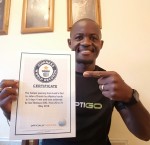
Best Regards,
Idai Makaya.
